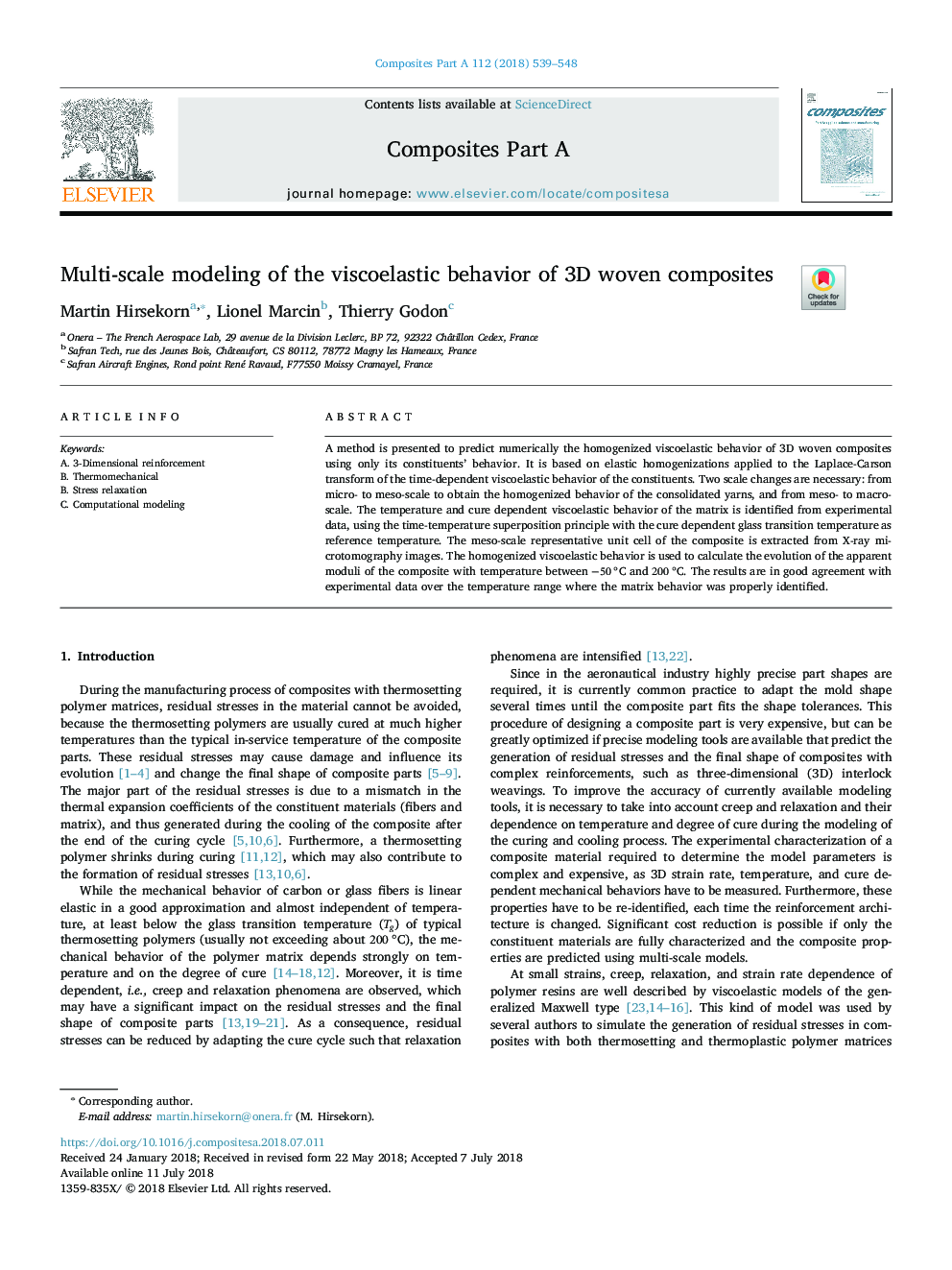| Article ID | Journal | Published Year | Pages | File Type |
|---|---|---|---|---|
| 7889534 | Composites Part A: Applied Science and Manufacturing | 2018 | 10 Pages |
Abstract
A method is presented to predict numerically the homogenized viscoelastic behavior of 3D woven composites using only its constituents' behavior. It is based on elastic homogenizations applied to the Laplace-Carson transform of the time-dependent viscoelastic behavior of the constituents. Two scale changes are necessary: from micro- to meso-scale to obtain the homogenized behavior of the consolidated yarns, and from meso- to macro-scale. The temperature and cure dependent viscoelastic behavior of the matrix is identified from experimental data, using the time-temperature superposition principle with the cure dependent glass transition temperature as reference temperature. The meso-scale representative unit cell of the composite is extracted from X-ray microtomography images. The homogenized viscoelastic behavior is used to calculate the evolution of the apparent moduli of the composite with temperature between -50°C and 200°C. The results are in good agreement with experimental data over the temperature range where the matrix behavior was properly identified.
Keywords
Related Topics
Physical Sciences and Engineering
Materials Science
Ceramics and Composites
Authors
Martin Hirsekorn, Lionel Marcin, Thierry Godon,
